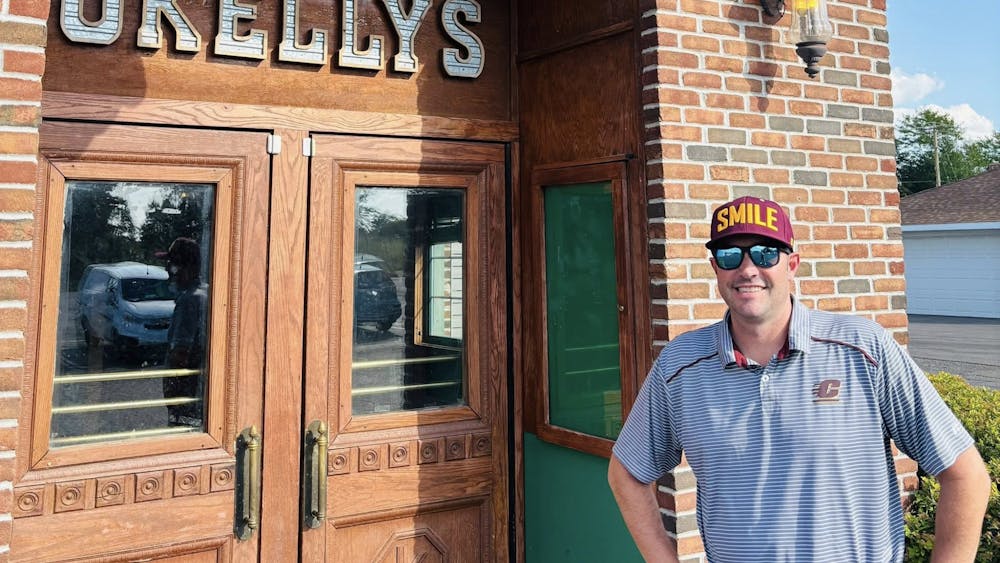One Year Later: Take a look back at the March 2, 2018 residence hall shooting that changed CMU's campus forever
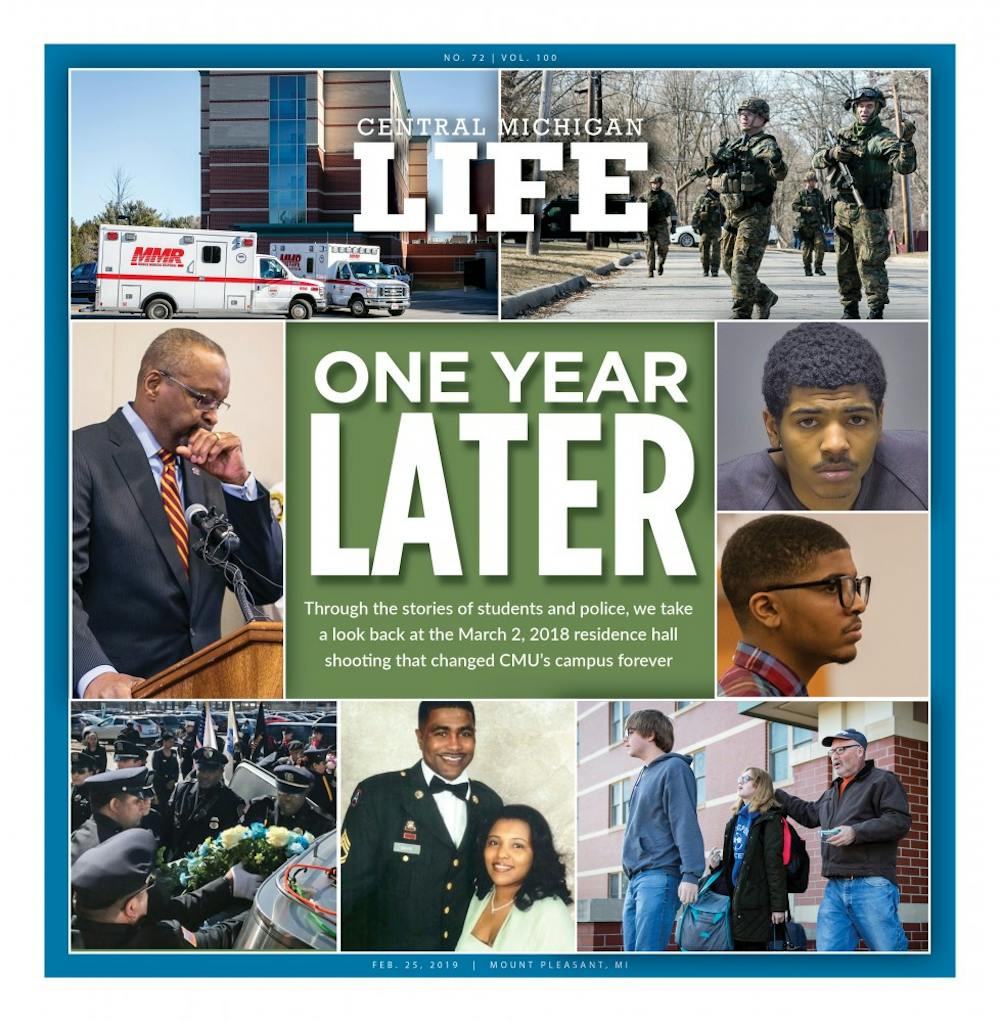
One Year Later: Through the stories of students and police, we take a look back at the March 2, 2018 residence hall shooting that changed CMU's campus forever.
“The CMU Police Department is responding to a report of shots fired near the fourth floor area of Campbell Hall, again, shots fired near the fourth floor area of Campbell Hall. Please stay clear of the area.”
On Friday, March 2, 2018, the last day of classes before spring break, Central Michigan University students were preparing to leave campus. Some students, like Evan Ballinger, a Romeo sophomore, skipped morning classes so they could leave campus early. Ballinger was in a good mood. He woke up early. He wanted to beat the Spring Break rush. Ballinger was going to give his buddy a ride back to their hometown.
Troy junior Adie Harig woke up late that morning. She forgot to set an alarm for a 9 a.m. group project meeting. She was texting group members about having to cancel since she wasn’t going to make it to the meeting on time.
Sometime after 8 a.m. Ballinger was packing his car for the trip home when he noticed a student suddenly barrel past him. He made note of the way the man was holding his arm; stiff, against his side as if he was holding something close to his hip. Ballinger thought about making a funny comment to him — it's “a little early for a run.” After seeing the determined look on the student’s face, Ballinger decided to keep the comment to himself.
After contacting her study group, Harig laid down to go back to sleep. Then she heard four-to-six loud, popping noises. The sounds came from down the hall. She thought it could have been gunshots, but Harig told herself that it couldn’t be. She was already spooked from spending the night alone in her dorm after her roommates left for Spring Break. Harig calmed herself down and tried to go back to sleep. She heard a wiggle of her room's door handle as she drifted off.
Ballinger, who was almost ready to leave the parking lot to pick up his friend and drive home, saw James Eric Davis Jr. leaving the Towers complex. He made note that this was the same student, wearing mustard-colored pants, who had rushed by him before — the student who looked so intense as he walked by him in the parking lot.
Ballinger picked up his phone and received the Central Alert warning about "shots fired" on the fourth floor of Campbell Hall. He texted his friend – “it might be awhile before we leave.”
Police swarmed the Towers parking lot. Ballinger realized that he might have been the last person to see Davis Jr. before the incident. Ballinger approached the nearest officer and said that he might know the guy they are looking for. Ballinger was the one who described Davis Jr.’s pants as “mustard yellow” to police, which became part of the description police used while searching for the shooting suspect.
A banging on the door of her dorm wakened Harig. With her phone on silent, she never heard the Central Alert. When she answered the door, police told her Davis Jr. had just shot and killed both of his parents in Campbell Hall.
"I couldn't even spell my name (before police questioning)," Harig remembered, after being so shook at the news that two people had been killed just down the hall.
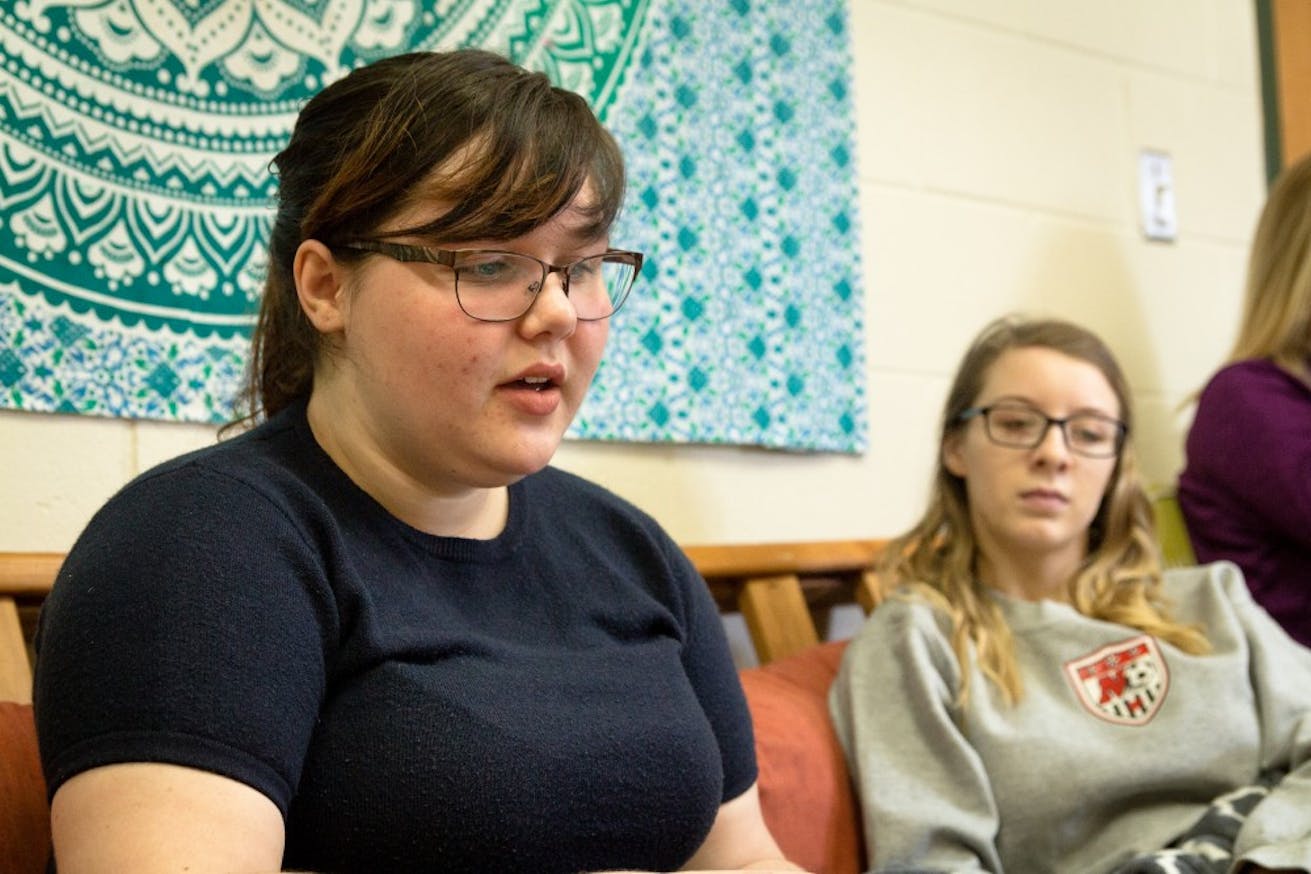
The night before
Twenty-four hours before the manhunt for Davis Jr. began, he was the one doing the searching. He was afraid for his life. A Towers residence police officer met with him. Davis Jr. told the officer that someone was trying to kill him.
Police investigated. Officers determined that no one was trying to hurt him. Hours later, police found Davis Jr. in a Towers hallway with his bags packed. He was ready to leave. Police questioned him. Officers say they tried to determine why he was behaving erratically. They asked him if he was on drugs. He answered "yes." The officer asked about whether he was on marijuana, LSD or mushrooms. According to police, Davis Jr. answered yes to all of them.
The CMU Police Department called his mother, Diva Davis, to inform her they were concerned about Davis Jr. Diva said he was not acting like himself. She agreed that drug use could be causing his unusual behavior.
Police requested an EMS unit. Davis Jr. was taken to MidMichigan Medical Center’s for observation.
“As police, our obligation is to get him there,” said CMUPD Lt. Larry Klaus, explaining police procedure. “As police, we fulfilled our due diligence to try and get that person treatment they need.”
Hours later, CMUPD officers heard on the radio traffic that a young man had broken out of the hospital. They were searching for him near the medical center. By the time CMUPD arrived to the hospital, Davis Jr. had already been apprehended.
His parents were en route to the hospital from Chicago. They planned on picking him up and trying to determine the source of his erratic behavior. Before heading home, they wanted to collect his things from his dorm room. The couple arrived after the four-hour drive from the Chicago area early on March 2.
Shortly after picking him up from MidMichigan, the family arrived on campus. Davis Jr. and his father walked to the Towers front desk because the student couldn't remember which room was his, said Newberry sophomore Shayla Ducsay, who saw Davis Jr. in the lobby that morning.
While his mother and father stayed in his dorm room, Davis Jr. went to his father’s car.
A part-time Bellwood police officer, Davis Sr. kept a handgun in the vehicle. Davis Jr. took his father's gun, moved past Ballinger and walked through the entrance of the Towers.
Moments later, and for reasons not even he understands, Davis Jr. shot his father and mother to death.
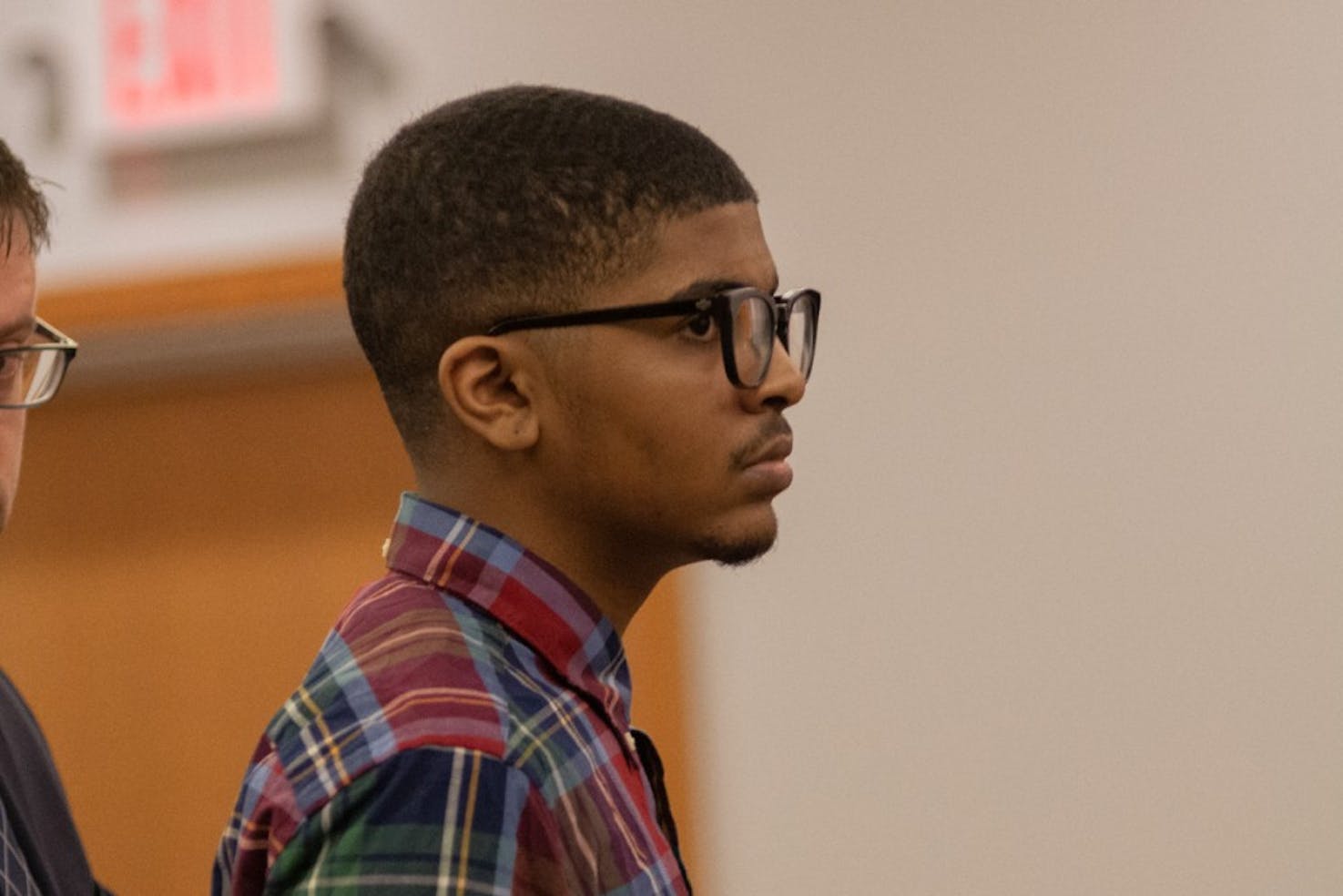
James Eric Davis Jr. and his attorney Josh Blanchard listen to Judge Eric Janes Jan 25 at Isabella County Courthouse.
Police arrive at Campbell Hall
Mount Pleasant Police Department Officer Jeff Browne was one of the first officers to arrive at the scene. According to Browne’s police report, when he reached the fourth floor of Campbell Hall, he saw two black students handcuffed and lying on the floor.
When Browne continued to approach the residence hall room, he was informed that there were two bodies in the room and that the shooting suspect fled the scene.
The two handcuffed men were Davis Jr.’s roommates. Both were present during the shooting. They were handcuffed while police secured the scene, which CMUPD Lt. Michael Sienkiewicz said is standard procedure when dealing with an active shooter of unknown identity and whereabouts.
One of the roommates, Brian White, identified Davis Jr. as a “light skinned African-American male” wearing a blue hoodie and yellow pants, according to Browne’s report. Central Michigan Life requested incident reports from CMUPD and MPPD. Both reports, especially CMUPD's, are heavily redacted and provide only glimpses into witness statements and officer narratives.
Within minutes, MPPD, CMUPD, Michigan State Police and the Isabella County Sheriff's Department were working the crime scene. By the end of the day, police officers from across Michigan assisted in the manhunt for Davis Jr., including members of the FBI and Bureau of Alcohol, Tobacco, Firearms and Explosives.
CMUPD Capt. Fred Harris was in charge of leading the incident command center. His job included setting up a base of operations that the hundreds of responding officers could use as they searched the campus and surrounding community for the shooting suspect. Harris began coordinating the search in a mobile command center and soon moved the operation to the Isabella County Dispatch. The departments worked together to gather and share information.
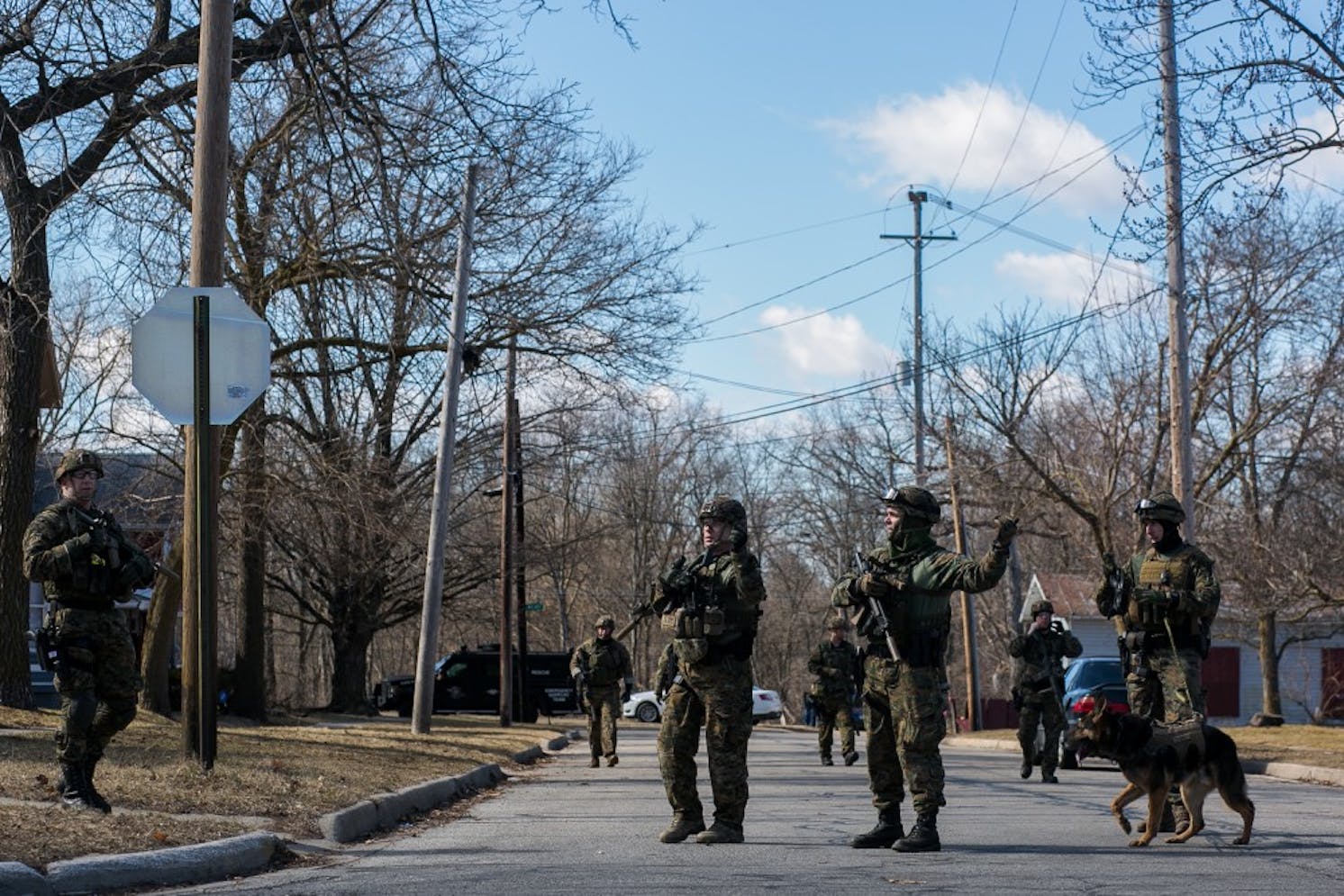
As the day went on and Davis Jr. was still at large, officers were given shifts so that the manhunt could continue without interruption. Whiteboards were put in place with key information so that officers just arriving could be quickly briefed and sent on their way.
Later in the day, Gov. Rick Snyder arrived on campus.
"Everyone is working together to do whatever we need to do to (apprehend) this person and then to safely make sure we can get students, faculty and staff home," Snyder said.
When CMUPD Chief Bill Yeagley learned about the double homicide, he was more than 1,000 miles away on a planned vacation in Florida. Though the news was upsetting, Yeagley knew the CMU community was in good hands thanks to his well-trained staff. Yeagley said he had complete faith in his colleagues and knew they were adequately trained and prepared to handle the situation.
His immediate thought was "how to get back to CMU in order to support them." Yeagley would be on a flight and back on campus within hours.
“I had no concern about, ‘Are we going to do the right things? Are we going to resolve this?’” Yeagley said. “I just felt bad that I wasn’t here to support and help. But not once did I doubt the outcome.”
Sighting ends the search
Moments after the Central Alert was sent warning students and faculty of the shots fired in Campbell Hall, University Communications began fielding hundreds of calls from students, parents as well as local, state, national and even international media outlets. Director of Communications Heather Smith received calls from media outlets such as The Washington Post, New York Times and ABC News. The department was receiving more calls than it was equipped to handle.
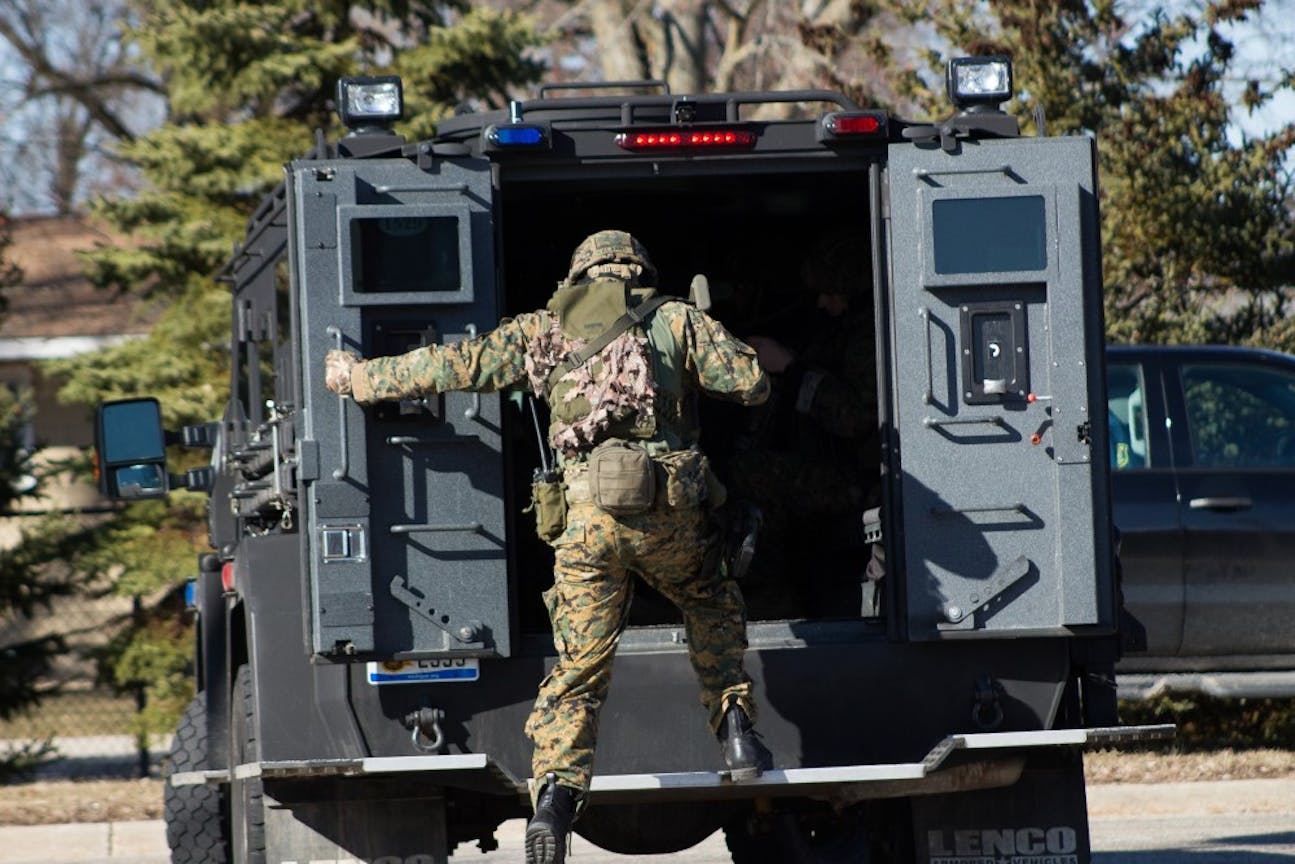
Armed personnel climb into an armored truck outside Campbell Hall during shooting situation at Central Michigan University which left Diva and James Eric Davis, Sr. dead on March 2.
Meanwhile, rumors about details involving the shooting were circulating on social media. Erroneous reports were declaring as many as seven people had been shot. University Communications had to act fast and begin rumor control immediately. The department worked closely with CMUPD, Smith said, to get updated information and release it when possible.
“We trust each other’s instincts and expertise," Smith said. "We were leaning on each other."
The tip that lead to Davis Jr.’s location was reported 15 hours later, just after midnight. A Great Lakes Central Railroad employee, who was aware of the manhunt, spotted someone who looked “suspicious” near the railroad tracks and contacted police.
The two officers who sent Davis Jr. to MidMichigan Health Center after requesting an ambulance arrived at the railroad tracks. They recognized the distraught student they met with the night before. Davis Jr. was naked, exhausted and freezing.
Less than a hundred feet away from campus, Davis Jr. was walking alone along the railroad tracks that led back to Campbell Hall near Bellows Street.
In an interview, after he was arrested, the officers asked him questions.
"Where were you?"
Davis Jr. said he climbed into a storm drain and fell asleep.
"Where were you going?"
Davis Jr. replied, “I was going home."
Reflecting on emergency response
While the day presented many challenges, it also provided validation for the emergency plans and training that had been put into place years before. University administrators and CMUPD both agreed that policies and training that were put in place years before, paid off that day when they needed them to. Even small changes provided a major impact as they were responding to the campus crisis.
A few years ago, the CMUPD and all other police departments in Isabella County switched to a new, shared radio frequency. This allowed all other officers arriving from outside police departments and jurisdictions to easily switch over to the same frequency and communicate with each other.
“If we wouldn’t have had that, it would have been a huge cluster mess,” Harris said. “Because everyone would have been in their own silos and we wouldn’t have been able to talk to anybody.”
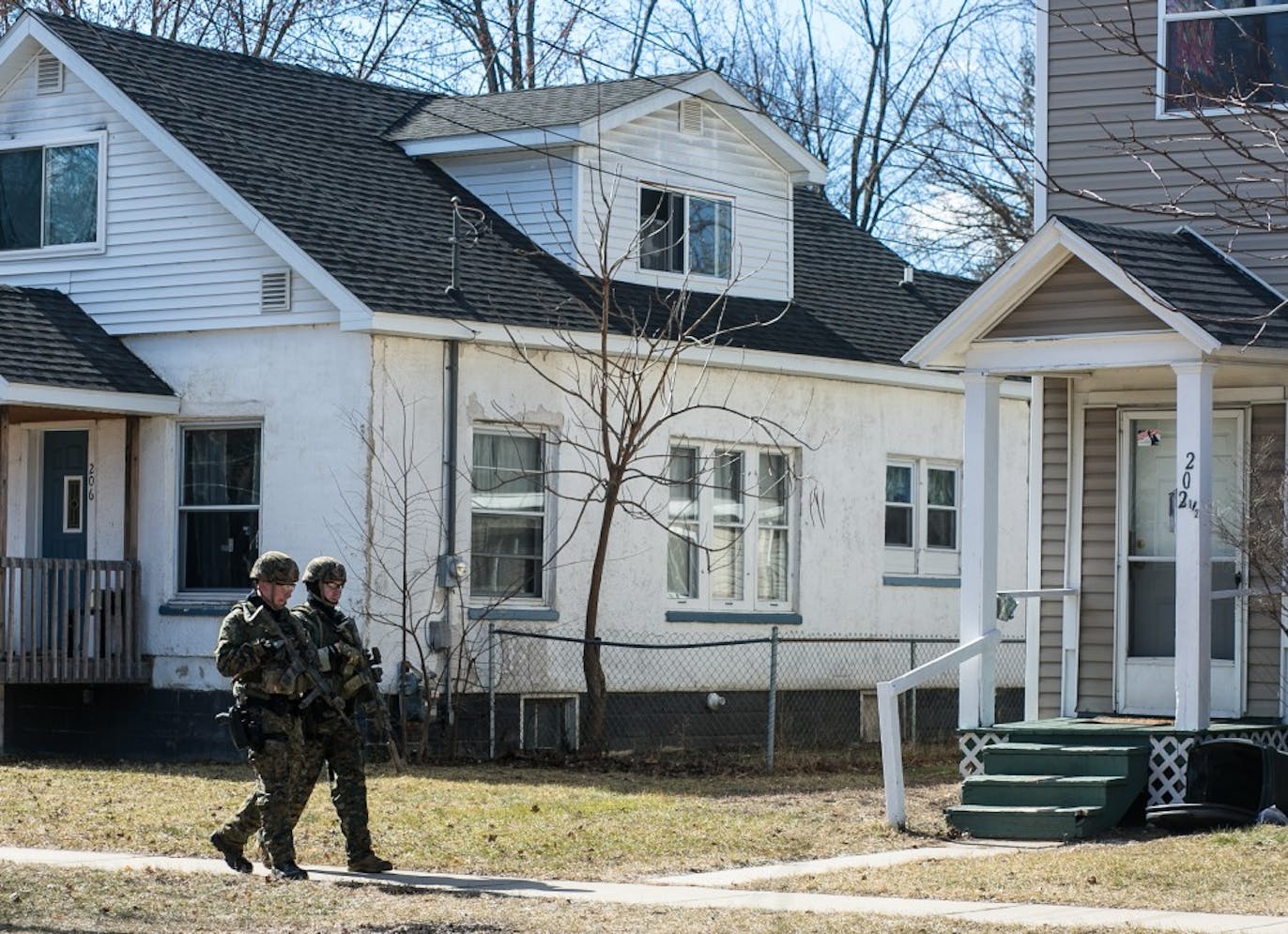
Yeagley attributed much of the effectiveness of the police search to the fact that officers didn't also have to communicate with parents. Police were able to focus on the crime scene and manhunt because University Communications was able to field hundreds of calls from students and parents. In addition, Smith said the department helped arrange the use of the Comfort Inn to provide a place for parents waiting to pick up students who were still on lockdown on campus.
Student and faculty cooperation also played a huge role in "what went right" that day, Yeagley said. While Davis Jr.’s location was still unknown, students and faculty listened when they were told to stay put for hours before finally being given the all clear to evacuate campus.
“I can not tell you how much that contributes to keeping people safe and the success of this entire operation,” Yeagley said. “I really, very much appreciate that attitude, response and willingness from our community.”
The effectiveness of the unified police response to the March 2 shooting validated the training that CMUPD already receives in many ways, Klaus said.
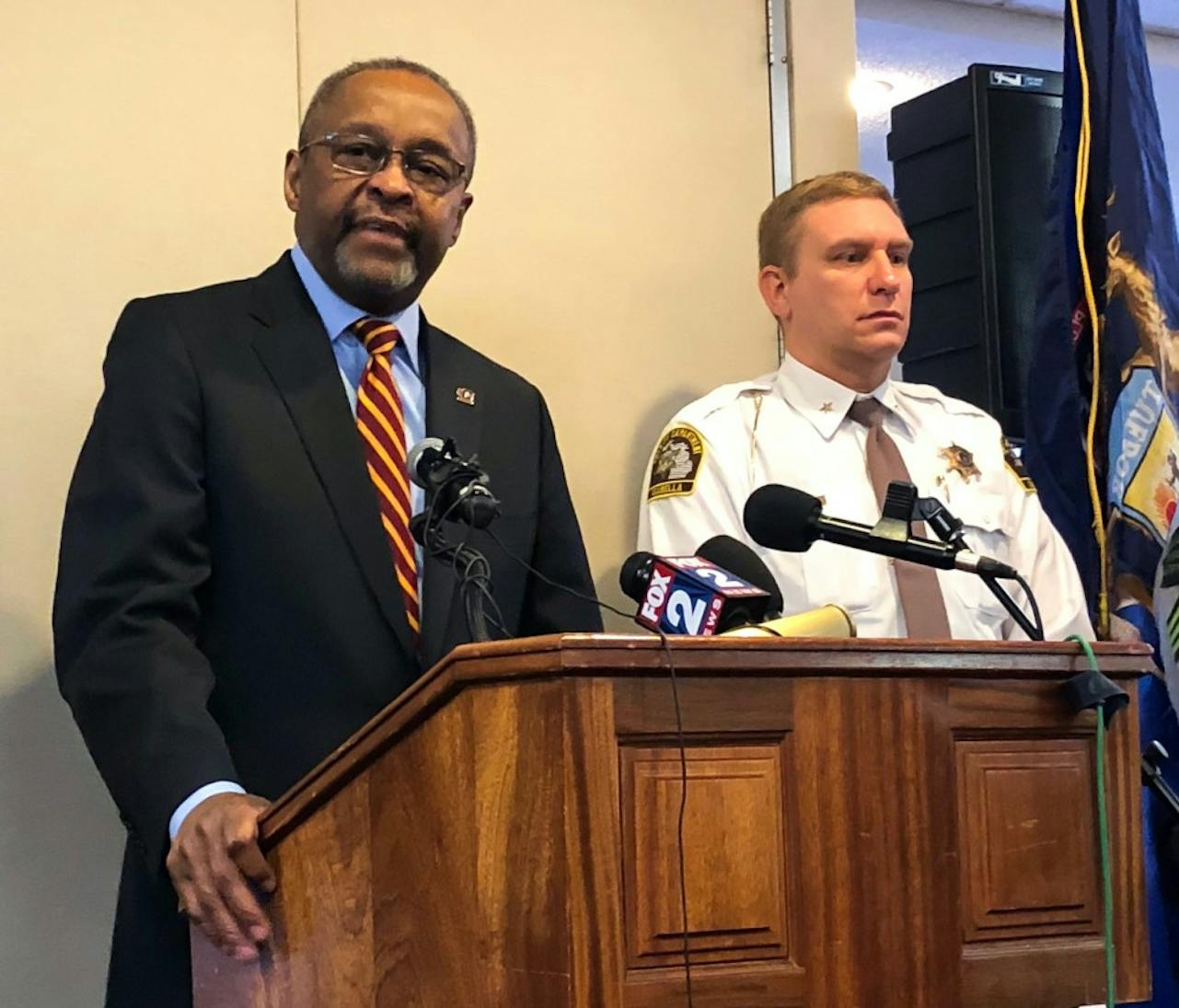
CMU President George E. Ross speaks during a press conference in the Bovee University Center about the shooting in Campbell Hall and the capture of suspect James Eric Davis, Jr. on March 3.
"There is a series of training set forth to lay that foundation for when it happens, because we always say when not if," Yeagley said. "Not one guy is responsible for the whole thing, each individual has their own responsibilities."
Harris set up the incident command center, Lt. Cameron Wassman handled communications and Sienkiewicz secured the crime scene in Campbell Hall.
“We had a lot of things going on that day, and for a little police department we did exceptionally well,” Klaus said.
University President George Ross spoke at a press conference in the Bovee University Center on March 2 and the next morning. He also released a statement to the community on March 3.
"We talk often about One CMU," Ross wrote in the statement. "Yesterday, we lived it. Each of you, in your own way, upheld and expanded the strong sense of community that makes Central Michigan University and Mount Pleasant so special."
What happened to Davis Jr.
Four days after the shooting, Davis Jr. was arraigned in Isabella County Trial Court. He appeared in video arraignment with his court-appointed attorney, Josh Blanchard, from his hospital bed where he learned he was being charged with open murder and felony firearm charges.
Funeral services for Diva and Davis Sr. took place March 10 at Broadview Missionary Baptist Church in Broadview, Illinois.
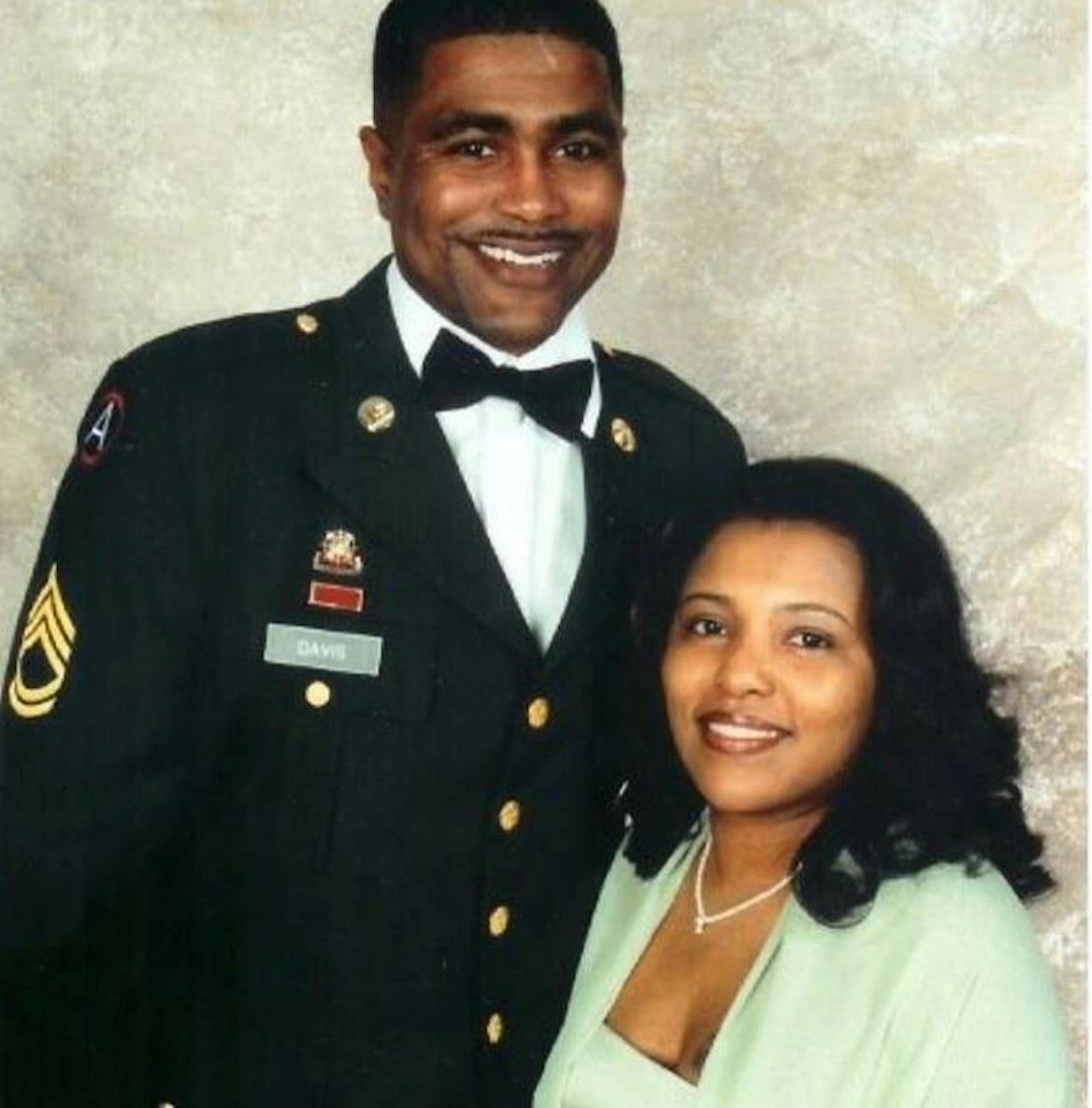
James Eric Davis Sr. and Diva Davis.
“We had picnics in our backyard,” Julian Leal told the Chicago Tribune, a neighbor of the Davis family. “I just had a beer with him last week (before March 2). We talked about our kids who are in college. He was proud of his son.”
On April 5, 2018, Davis Jr. was found incompetent to stand trial after an evaluation conducted at the Center for Forensic Psychiatry. On Oct. 31, 2018, Davis Jr. was declared competent to stand trial by Isabella County Judge Eric Janes following a competency hearing the day before.
On Jan. 25, 2019, Davis Jr. appeared in court and was deemed criminally insane at the time of the incident by Janes. The 20-year-old man pleaded not guilty by reason of insanity. He was sentenced to be again reevaluated after 60 days to be further diagnosed.
Russell Davis, the eldest of the three Davis siblings, was in court with other family members. He said that he visits his brother at the hospital and speaks with him on the phone. He and his sister Alexis are trying to adjust to life without their mother, father and brother.
“I just let him know that I loved him,” Russell said. “All I could do was be there for him and let him know that I loved him and have forgiven him.”
Planning for the future
Almost 12 months after the double homicide on its campus, CMU is collaborating with other universities to share what it learned responding to the incident and further develop its emergency action plan.
CMUPD has attended Michigan Association of Campus Law Enforcement Administrators conference to give presentations and share the insight officers learned through their response with other campus police departments and universities.
Associate Vice President of CMU Facilities Management Jonathan Webb is collecting input to create an improved emergency management plan. Webb encourages all students, faculty and staff to familiarize themselves with the plan so they can be prepared in the event of a future emergency situation.
Even before March 2, CMUPD had taken steps to prevent and minimize the effects of emergencies on campus. Lt. Cameron Wassman hosts presentations for incoming freshmen, their parents and any other groups that request information from CMUPD about what to do in the case of an active shooter.
“Over the last eight or nine years, we’ve reached thousands of (people),” Wassman said. “We need to encourage different groups to reach out to us if they need an in-person presentation.”
Faculty, staff, students or campus groups can request presentation, Wassman said. To schedule training, contact Wassman at wassm1cd@cmich.edu or (989) 774-7696.
Klaus is a member of CMU’s CARE Team, which is a form of Behavioral Intervention Team that receives tips about student mental health concerns and takes steps to connect students with resources that can help. CMU is ahead of many other universities who don’t have a CARE Team to help students in crisis, he said.
“We’ve got a very robust intervention team that tries to get information and prevent these things from happening,” Klaus said. “There’s a lot that goes on, but you can’t prevent them all.”
Looking back almost a year ago, Yeagley is confident that the training CMUPD had completed prior to March 2 was crucial in how effective their response was.
“Was it perfect? Heck no,” Yeagley said. “But the training and the work these folks have done put us in a position to minimize how terrible this was.”






